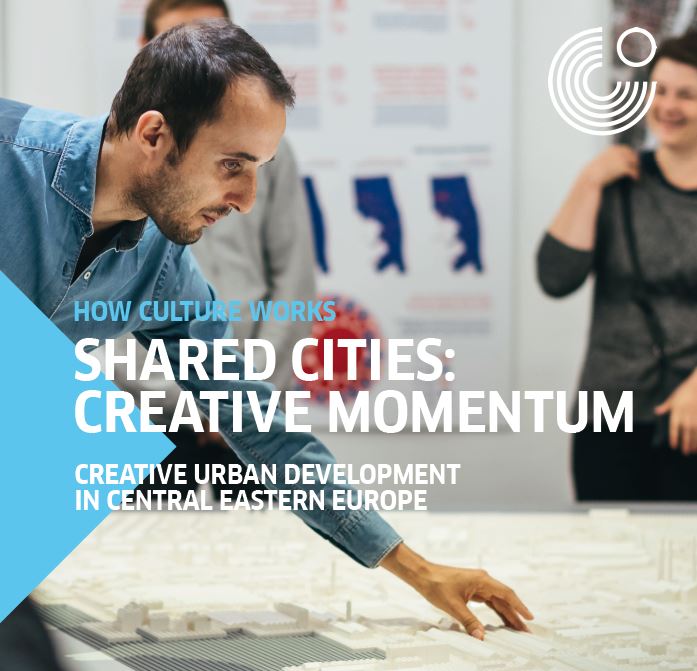
How Culture Works
"DOES EVERYTHING ALWAYS HAVE TO BE ASSESSED?" No. But when cultural work is financed with public funds, there is a necessity to evaluate.
Prague Permanent linkIf you express the recycling rate in terms of value (the residual value of recirculated products in relation to the initial value of all building products being discarded), it equals approximately 1%. That's the way we look at it. We think that next to the logistics of waste management, we need a system that allows us to maintain circulation elements with a value – this value being technical, cultural, or economic.
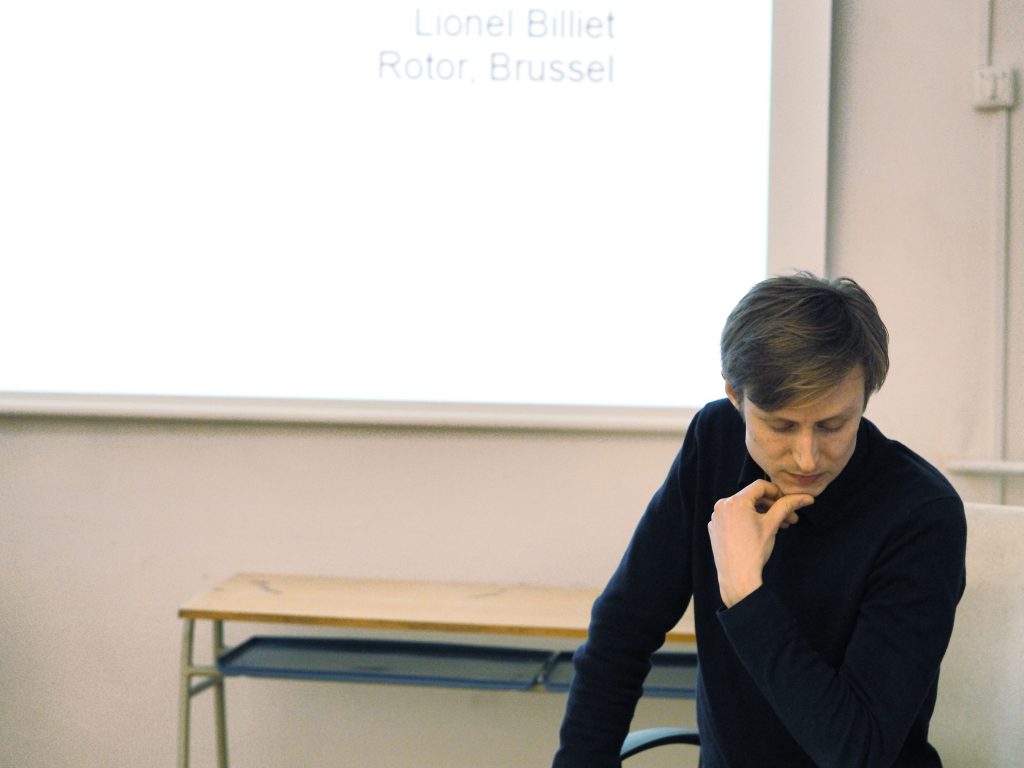
Lionel Billet © Zoltan Holocsy
Lionel Billet during the Shared Cities: Creative Momentum lecture series © Zoltán Holocsy
The interview was led by Ján Studený, Vysoká Škola Výtvarných umení, Bratislava
Your work on deconstruction is very inspiring and relevant to our interests. Can you outline the main points?
Rotor has existed since 2005 and began as a design and research studio. Following that during the last few years we have developed a business for the dismantling and sale of reclaimed building materials. For this aspect of our work we intervene before buildings are demolished or refurbished in order to extract the building features with the highest potential for reuse. We are involved in around thirty dismantling operations each year, often in large-scale buildings from the second half of the 20th century. We chiefly reclaim interior furnishings, such as lighting, flooring, partition walls, sanitary equipment etc. Some of these are sold on wholesale to other professionals and some sold to customers through our shop. We have a two thousand square metre warehouse in Brussels where the materials are stored and there is also a showroom.
One consequence of all of this is that we are now variously seen as an architecture studio, a research group, a think-tank, as exhibition curators and sometimes as dealers in reclaimed materials. In some ways these are all correct.
What was the first aim? Did you want to preserve material details or did you have more of an architectural focus?
In the very first projects at Rotor, reusing materials was chiefly an opportunistic way I which to build things with little or no outlay just as with many other young design collectives. However, the team quickly began to seek answers to apparently simple questions such as: how are building products fabricated? When and why does a product become waste? What makes a building obsolete ? How and where is the construction waste being processed ? In order to find answers to some of these questions we visited hundreds of factories, construction and demolition sites and waste treatment plants, etc. We observed a strange inability of the building industry to deal with reusable elements in an appropriate way. What was evident in self-built, informal projects seemed to be the exception in formal ones. So we started series of projects aiming at understanding, promoting and professionalizing the reuse of building components.
The issue of sustainable development is present our work. As you know, the production of building materials impacts hugely on the environment. In this respect materials sourced from the deconstruction of buildings often present an opportunity to drastically lower environmental impact in comparison to their manufactured equivalent. In contrast, dismantling and selling reused building elements is a low-carbon, locally rooted economic activity.
But beyond these ‘measurable’ effects, the topic of reuse also allows us to challenge some of the broadly accepted ideas about sustainability. We sometimes feel that the debate about sustainable architecture gets reduced to supposedly universal ‘solutions’, which are too simple and the same might apply to energy-neutral buildings, electric cars and solar panels, etc. Keeping elements in circulation seems like a simple idea, but it becomes interesting when put into practice when the practical challenges are addressed. It raises questions about product norms, of aesthetic appreciation, of work conditions and about how the material economy works, etc. What makes reused elements interesting to us is also the fact these products are anything but neutral: they often carry a kind of cultural content linked to their previous use which makes them very interesting ingredients for use in meaningful architecture. Next to that, there is at Rotor a certain fascination for building materials in general and in particular when it comes to the 20th century architecture.
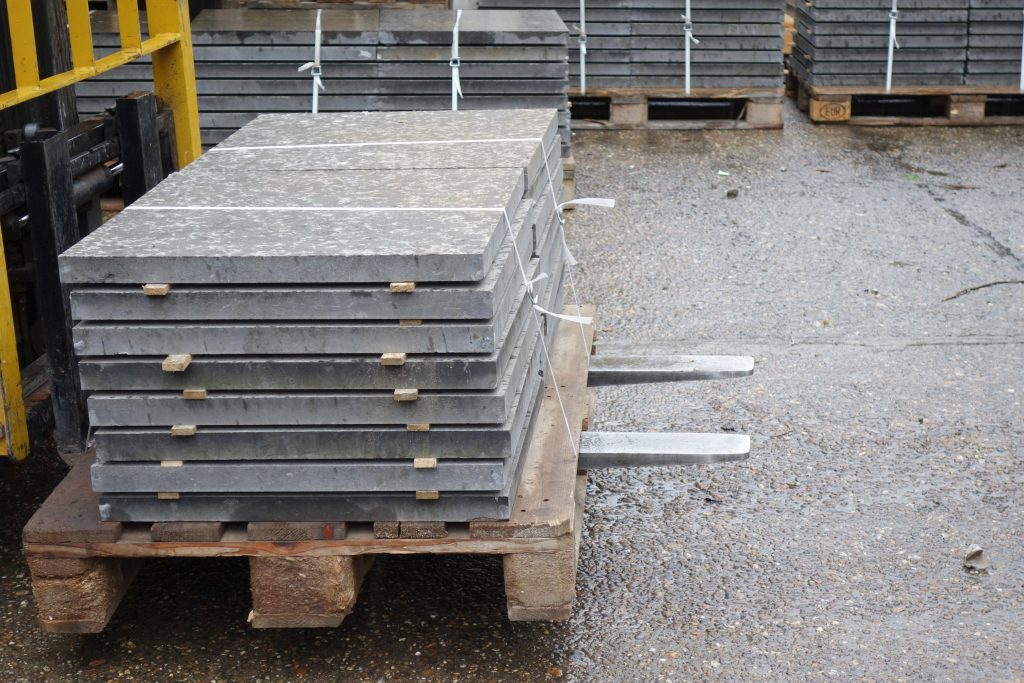
Fig. 1. 200 m² of blue limestone slabs were recovered from the terrace of an office’s cafeteria of the former headquarters of the chemical company Solvay in Brussels © ROTOR
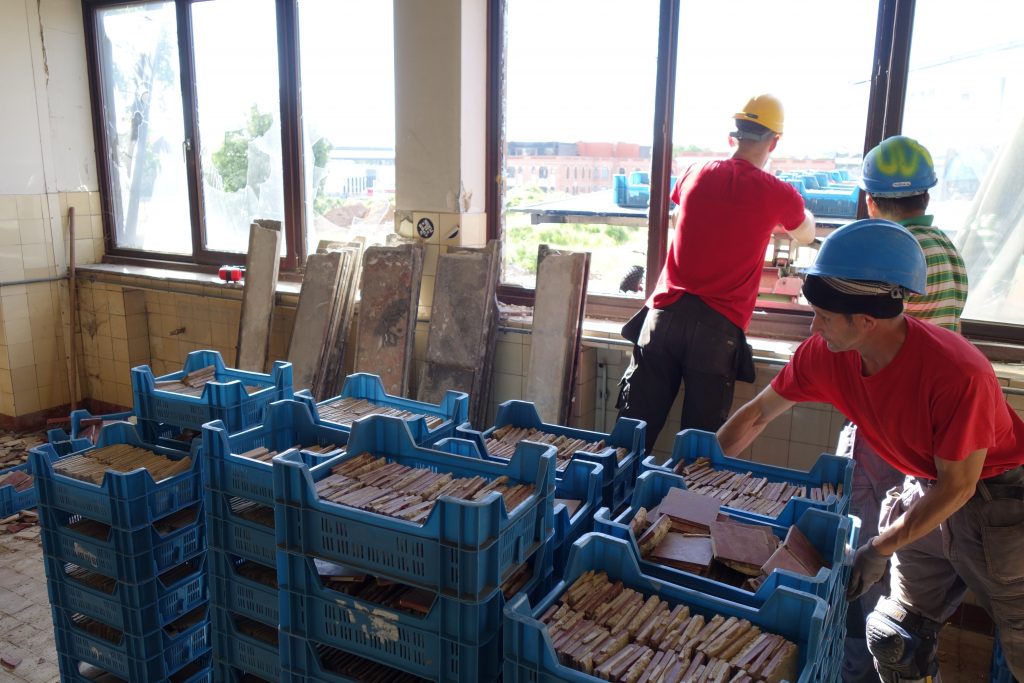
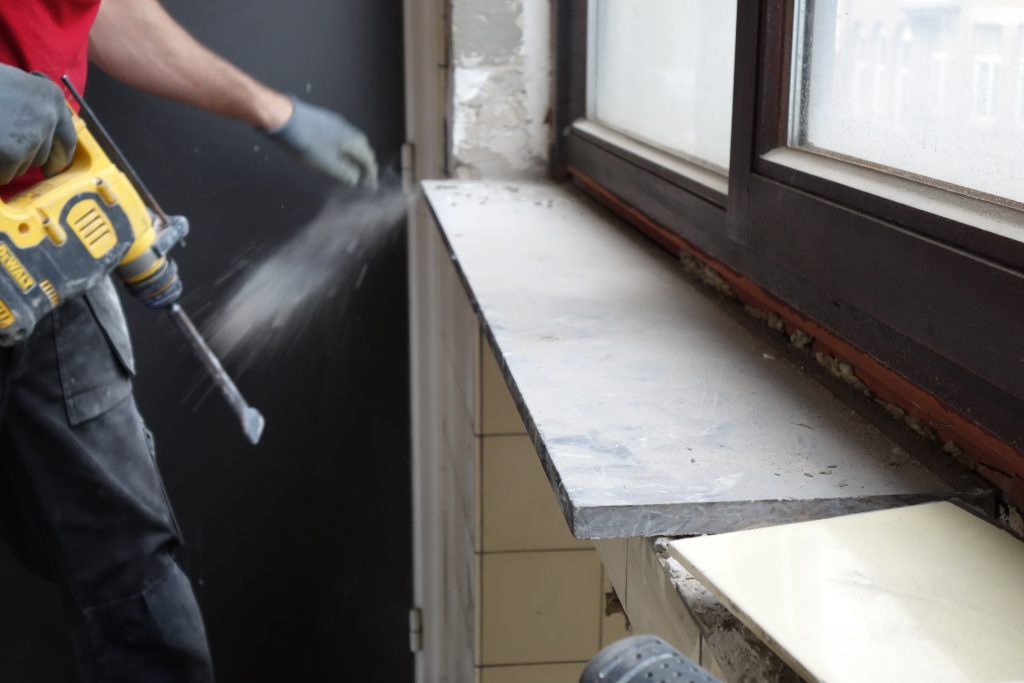
Fig. 2, 3. Dismantling of ceramic floor tiles and marble window sills, in the former headquarter of a public telecommunication company in Brussels © ROTOR
Can you explain this works in practice, using some examples?
Now that the whole area of deconstruction has become generally recognized as important and our particular expertise in this area has been recognized we have received a lot of interesting and sometimes surprising requests. Here is one example, among many others:
Last year, a contractor contacted us to invite us to reclaim materials from the interiors of the former headquarters of the telephone company in Brussels, a building from 1947 that was about to be renovated. While our team was working on site I joined a meeting with the architects and the client to explain what we were doing. I showed them a few samples of the ceramic floor tiles we were reclaiming and showed how these tiles look after the cement residue has been cleaned off. What I showed hem was a lovely high quality material The next week I received a phone call from the same architects telling me to not sell the tiles since the client had decided to buy the whole batch of 150 square meters and have them replaced in the same building! This was a situation where the original flooring had had to be removed anyway since the structure of the building had been drastically adapted. Our intervention showed them see a new possibility, a strategy for renovation they had not even previously considered because it is often believed that the reuse of materials is not economically realistic or technically feasible.
These materials have now been reconditioned and they stand ready on pallets in our warehouse for when the time is right for them to be laid in the building.
Can you describe the main topic in relation to the reclamation of Belgian reusable materials?
In Belgium we identified and visited more than a hundred companies who are active in selling reclaimed elements. Most of them are family-based small and medium sized enterprises, sometimes they have been active for more than a generation. They occupy a very discrete segment of the building industry. The building elements being recirculated currently includes (but is not limited to): pavement, structural steel and wood, bricks, doors, interior finishings, partition walls, sanitary equipment, flooring, etc.
When it comes to public policies, even if the reuse of building elements is mentioned in numerous documents as a top-priority strategy (e.g. the EU Directive 2008/98/EC on waste) in practice we see that most efforts in the last few decades to ‘close the loops’ in the building sector were limited to recycling by crushing and melting. Belgium is considered to be one of the most advanced countries in terms of construction waste recycling, with an impressive rate of ‘90% recycling. But when you look at what is behind the numbers you realize that this rate is achieved thanks to the industrial crushing of concrete and masonry rubble which is used as aggregate for roads, etc. But if the same rate was expressed in terms of volume it would probably drop to 50% (the mineral fraction of the waste stream is heavier).
If you express the recycling rate in terms of value (the residual value of the recirculated products in relation to the initial value of all building products being discarded), it would be equal to… 1%. And that’s the way we look at it. We think that next to the logistics of waste management, we need a system that allows us to maintain in circulation elements with a value – this value being of technical, cultural, or economic value .
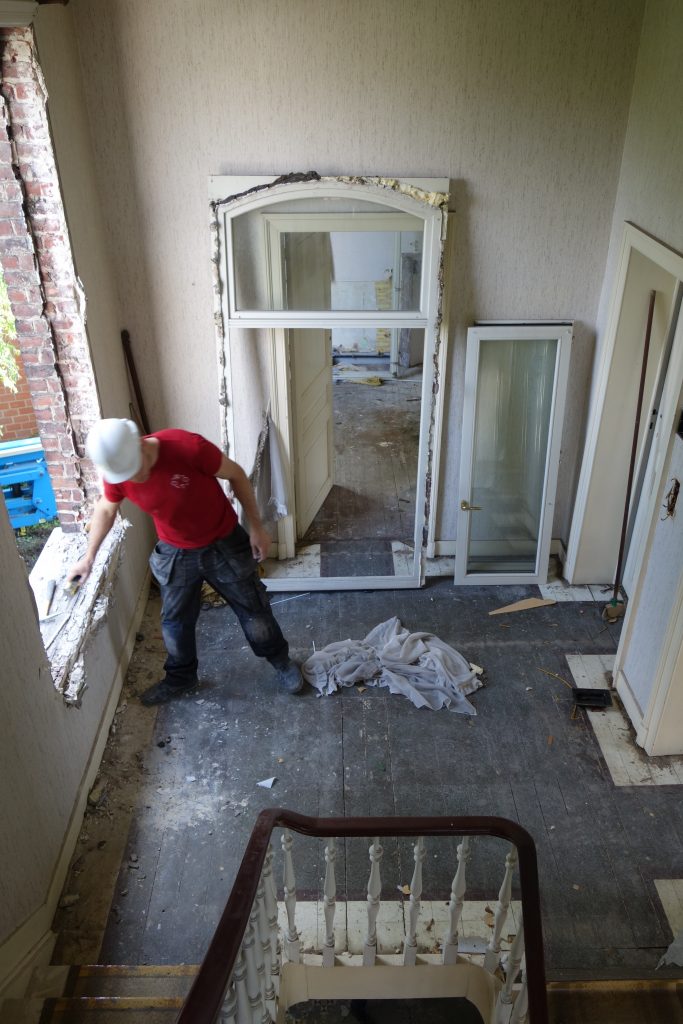
Fig. 4. In this house scheduled for demolition, it appeared that high-quality double-glazed windows with wooden frames had been installed a few years before. The windows were recovered and sold by RotorDC, with other materials from the building © ROTOR
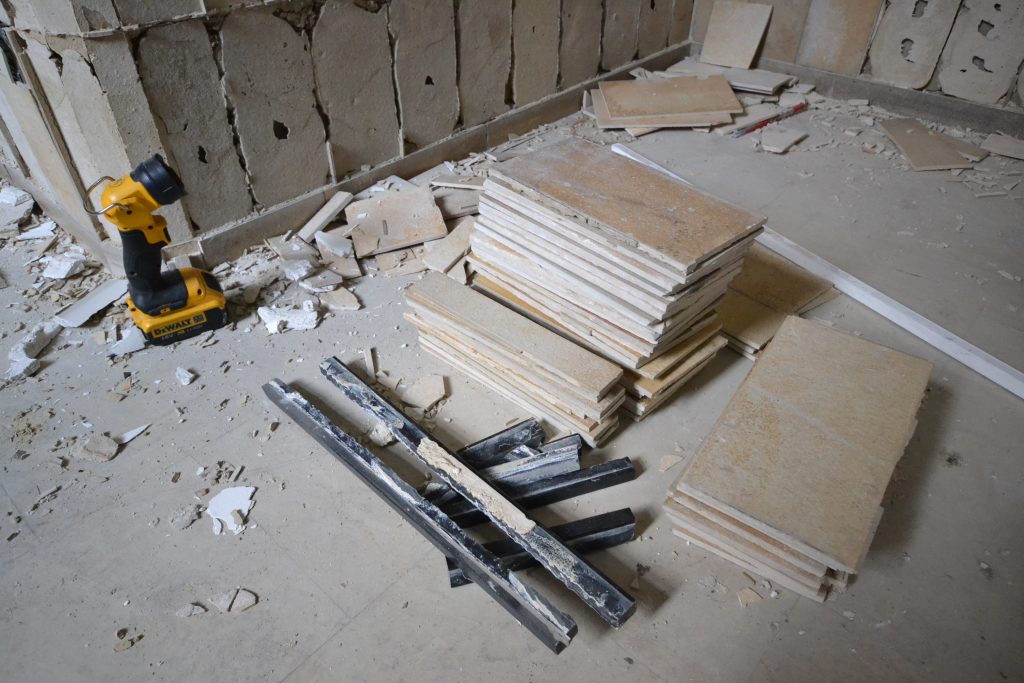
Fig. 5, 6. Cladding in Jura limestone, with stripes of black marble from Mazy. From the former headquarters of the chemical company Solvay in Brussels © ROTOR
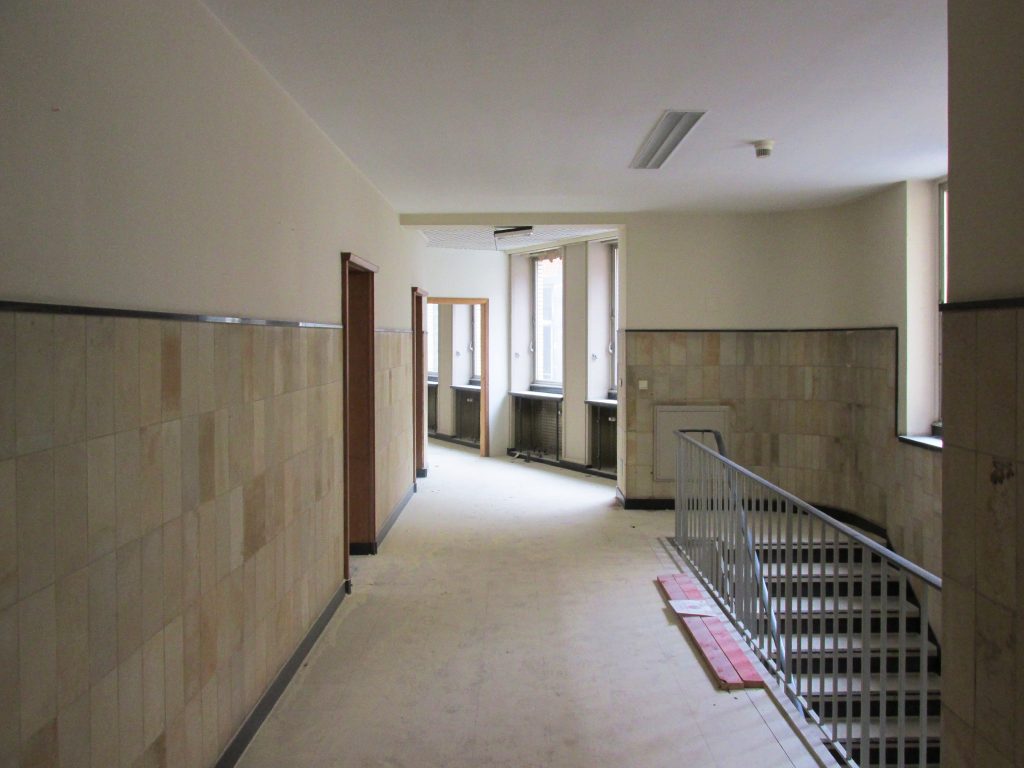
© ROTOR
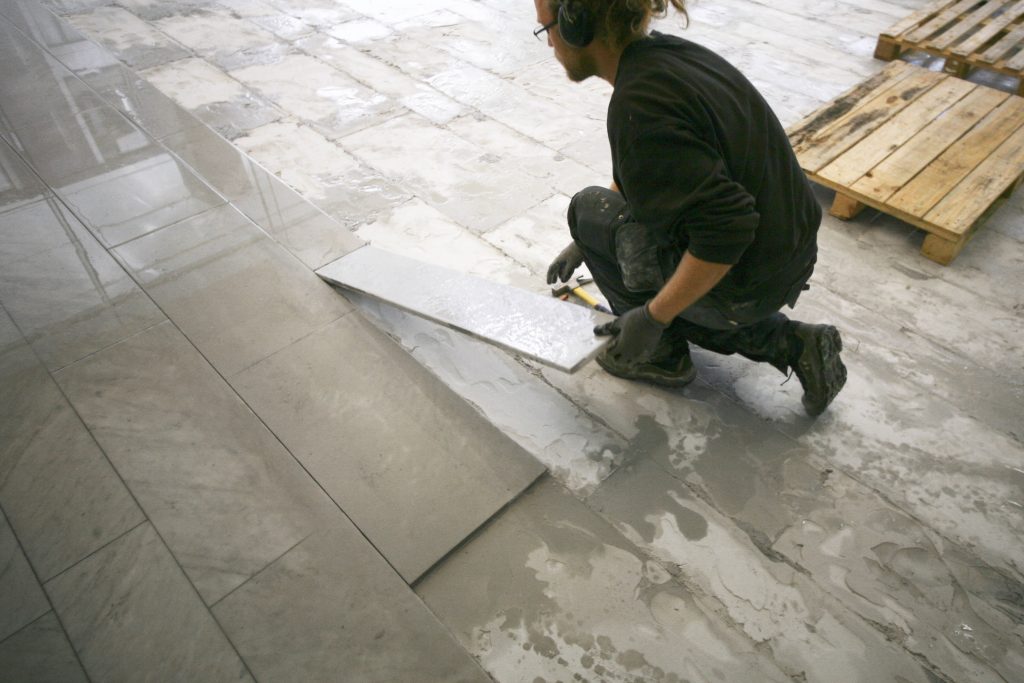
Fig. 7, 8. To salvage this marble flooring in the lobby of an office building, the RotorDC team had to firstly cut the cement joints with a diamond saw © ROTOR
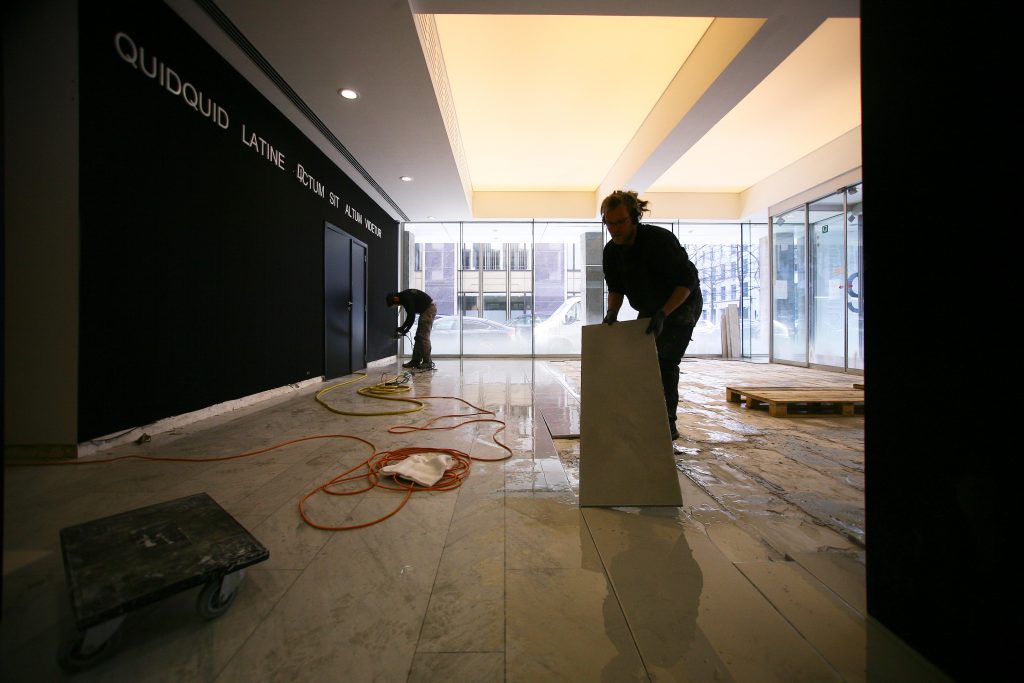
© ROTOR
Now that you have visited Bratislava do you think there could be a similar mode of work operating here? Have you noticed any similarities between buildings here compared to those in Belgium?
Bratislava and Brussels don’t share the same recent history but one similarity is that both cities have a medium-scale administrative and business center to service the surrounding region so a big part of the building stock consists of offices. In Belgium, the post-war period (especially from the 1950s until the oil shock of 1973) was a period of economic growth coupled with a lot of public investment in infrastructure and buildings. The finish we find in these buildings is of especially high quality since they were designed thoughtfully. Nowadays, most of these buildings are being renovated or demolished because the standards in terms of comfort, aesthetics and thermal insulation, etc have changed. That is one of the reasons why we pay a lot of attention to this category of buildings when it comes to reuse. In Bratislava we could find similar moments in the 20th century: the early modern architecture of the 1930s, the public buildings from the post-war period and the corporate interiors from the last few decades.
What do you think about the architectural heritage of the socialist regime here or even in Central Europe? Did you visit any buildings?
During my stay in Bratislava I saw numbers of impressive pieces of architecture from the socialist era such as the Prior Department Store and the National Archive. Visiting the Slovak Radio Building was an amazing experience. For such iconic buildings I hope in the first place that they will remain in use and get adopted by and maintained by a new generation. If they need to be transformed or renovated in the future, I hope it will be done in a sensitive and intelligent way – maybe by former students of the VSVU?
If the future architect in charge of the transformation of one of these buildings reads these lines I would like to invite him/her not only look at the volumes, the spaces, the general aspect and the structure – but to also pay attention to the materiality, the details, the interiors, and what the users have to tell about their building. This often brings a lot of refreshing insights.
I view Roto Comp as a design firm when I refer to your cooperation on OMA exhibitions or on your own work. If someone took a look at your website they would see plenty of design works. Can you explain what is your chief inspiration in this area? I was fascinated by the Exlimbo project you created for Prada in Milan.
As a design firm we spent most of our efforts curating exhibitions or creating interior architecture using in large part reused elements. We also take part in the debate about sustainability in architecture through publications, courses and lectures. The part of architectural discipline that is most interesting to us is not necessarily the act of building. Things like an understanding of a complex situation might involve making whoever commissioned a building project look differently at his/her building, negotiating an atypical work process in a regular project or transposing an element from one context to another etc…these are for us extremely relevant aspects of the whole process.
For instance the expo Ex Limbo is about material stocks that are being suspended on standby because their status in undefined. In this case, we showed in an exhibition piles of materials that were actually the pieces of the catwalks from the previous Prada shows. These piles came from Prada’s stock: the fashion company does not know what to do with this but they keep it. Showing this material allowed us to make a point about a phenomenon of the material economy; it allowed us to shed light on how Prada as an organization works and it also allowed us to invite visitors to look in another way at these tailor-made pieces of decor conceived in the last decade by some of the most famous names of contemporary design.
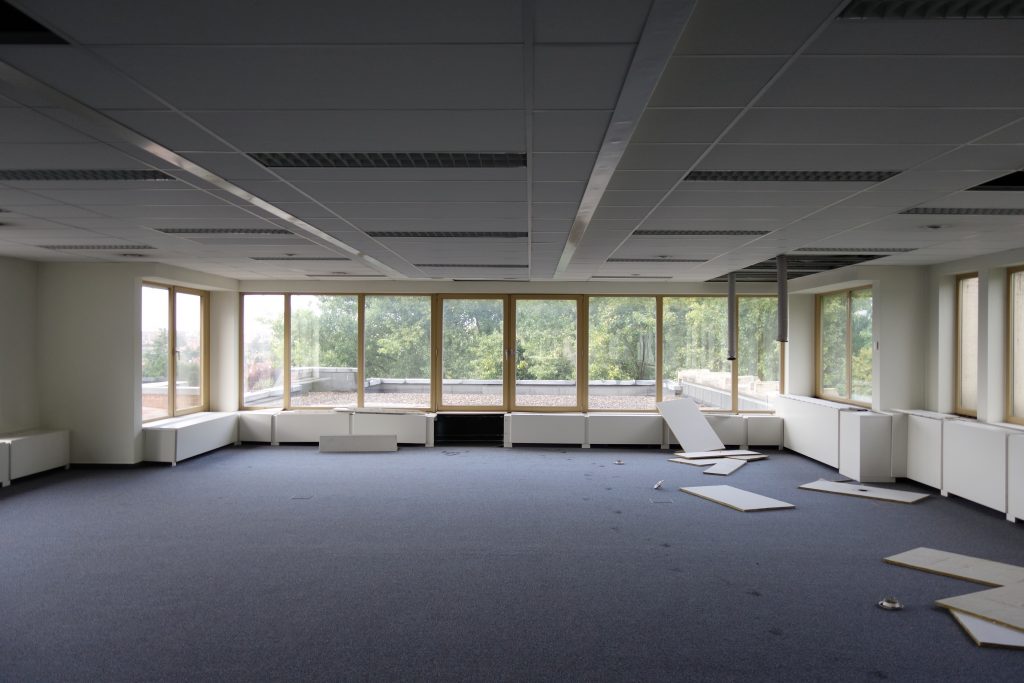
Fig. 9. In the office rental sector, it is a common practice to replace all the interior finishings every time there is a change of tenant. Partition walls, doors, ceiling, flooring, etc are removed so that the next user can create its own tailor-made interior. Sometimes this material has been in use for less than 10 years, yet it is been discarded as waste ©ROTOR
Can you explain how the Rotor group works? How many people are employed, what professionals are there in the firm and what is your opinion about such a broad coalition of professionals?
Rotor is a team of fifteen people. In addition there are a few temporary collaborators we work with. Most of us have a background in architecture but not everyone, for example, I graduated as a bio-engineer. We don’t look so much at diplomas.
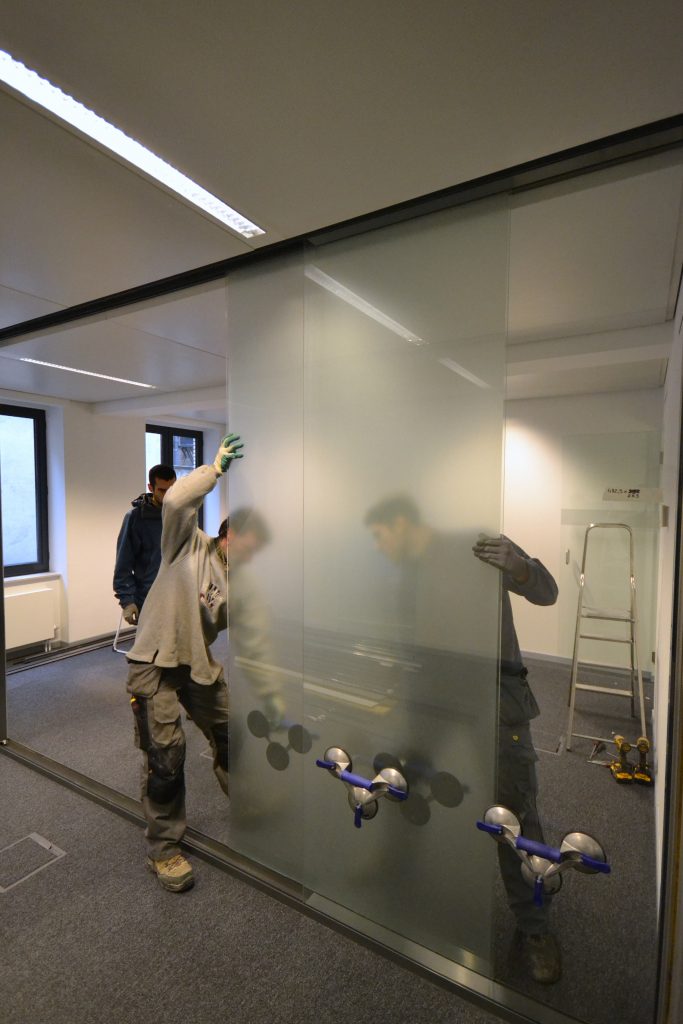
Fig. 10. 11. Reclamation of modular partition walls in an office building © ROTOR
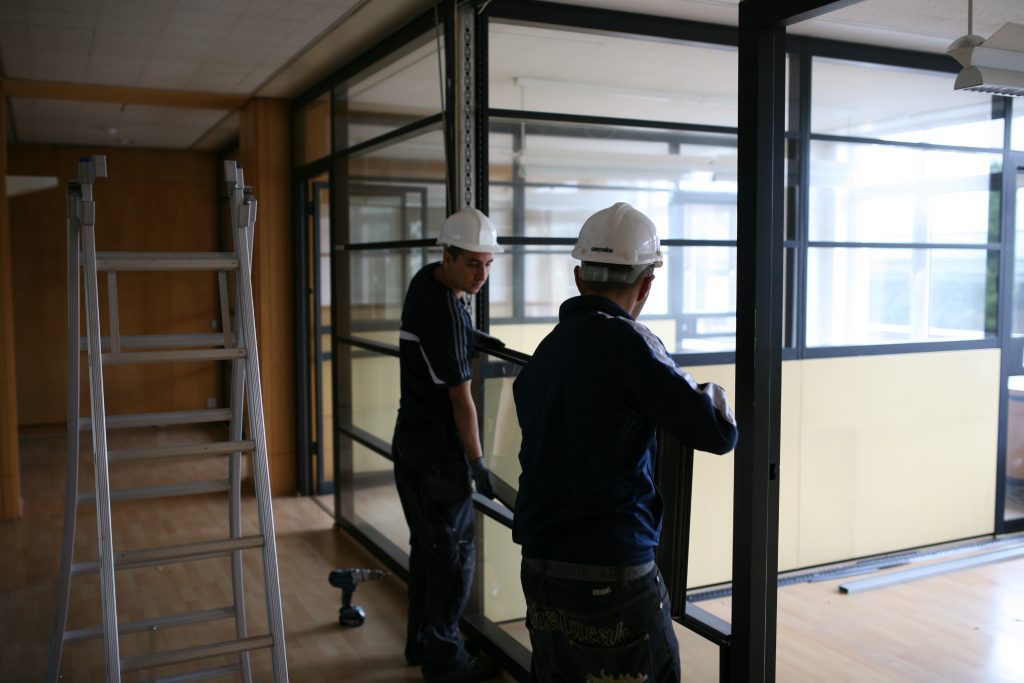
© ROTOR

"DOES EVERYTHING ALWAYS HAVE TO BE ASSESSED?" No. But when cultural work is financed with public funds, there is a necessity to evaluate.
Prague Permanent link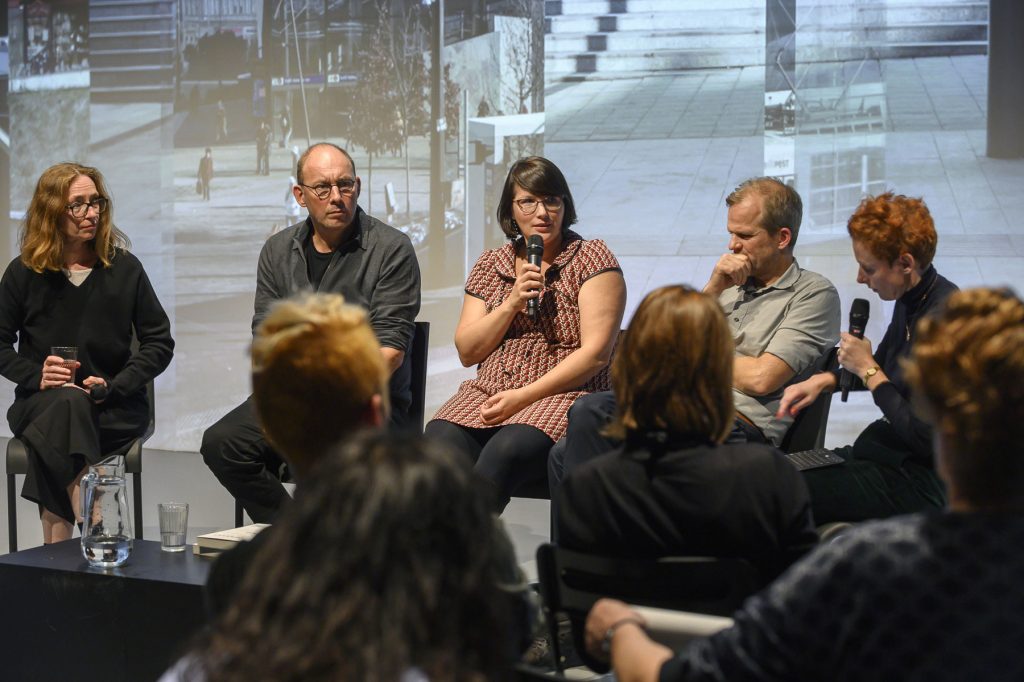
The one-day programme was based on discussion formats with renowned European architecture theorists, curators and urban researchers.
Prague Permanent link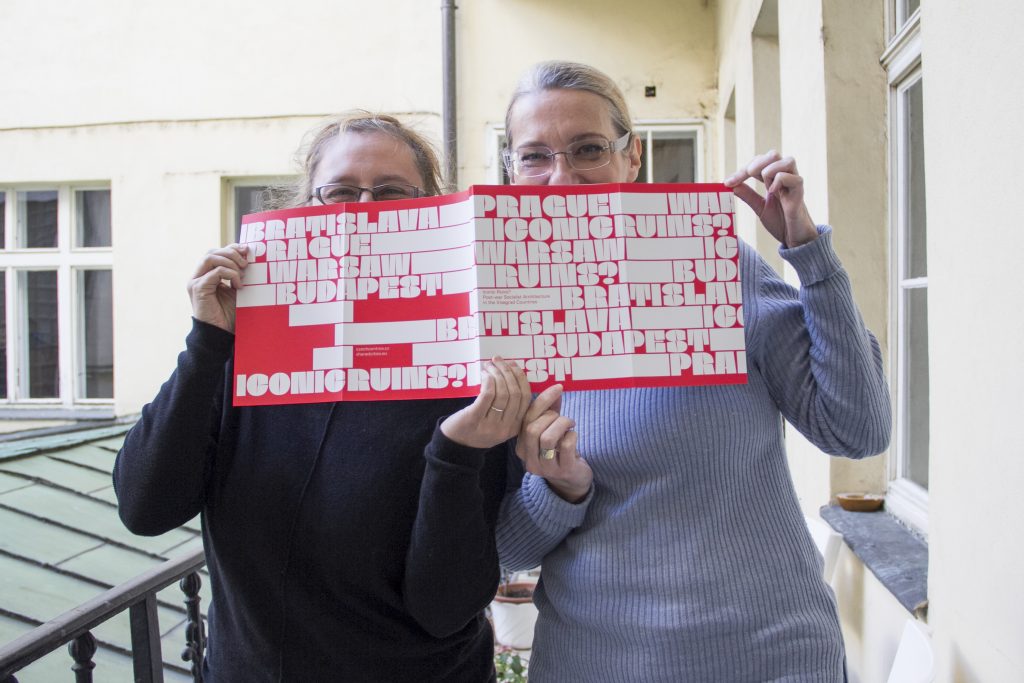
Within Shared Cities: Creative Momentum the Czech Centres realized the "Iconic Ruins?" exhibition and an economic impact evaluation of the project. How does the future of the exhibition look like? What are the benefits of having an economic analysis of the project? Find the answers in the interview with Ivana Černá and Sandra Karácsony from the Czech Centres / Česká Centra in Prague, Czech Republic.
Prague Permanent link